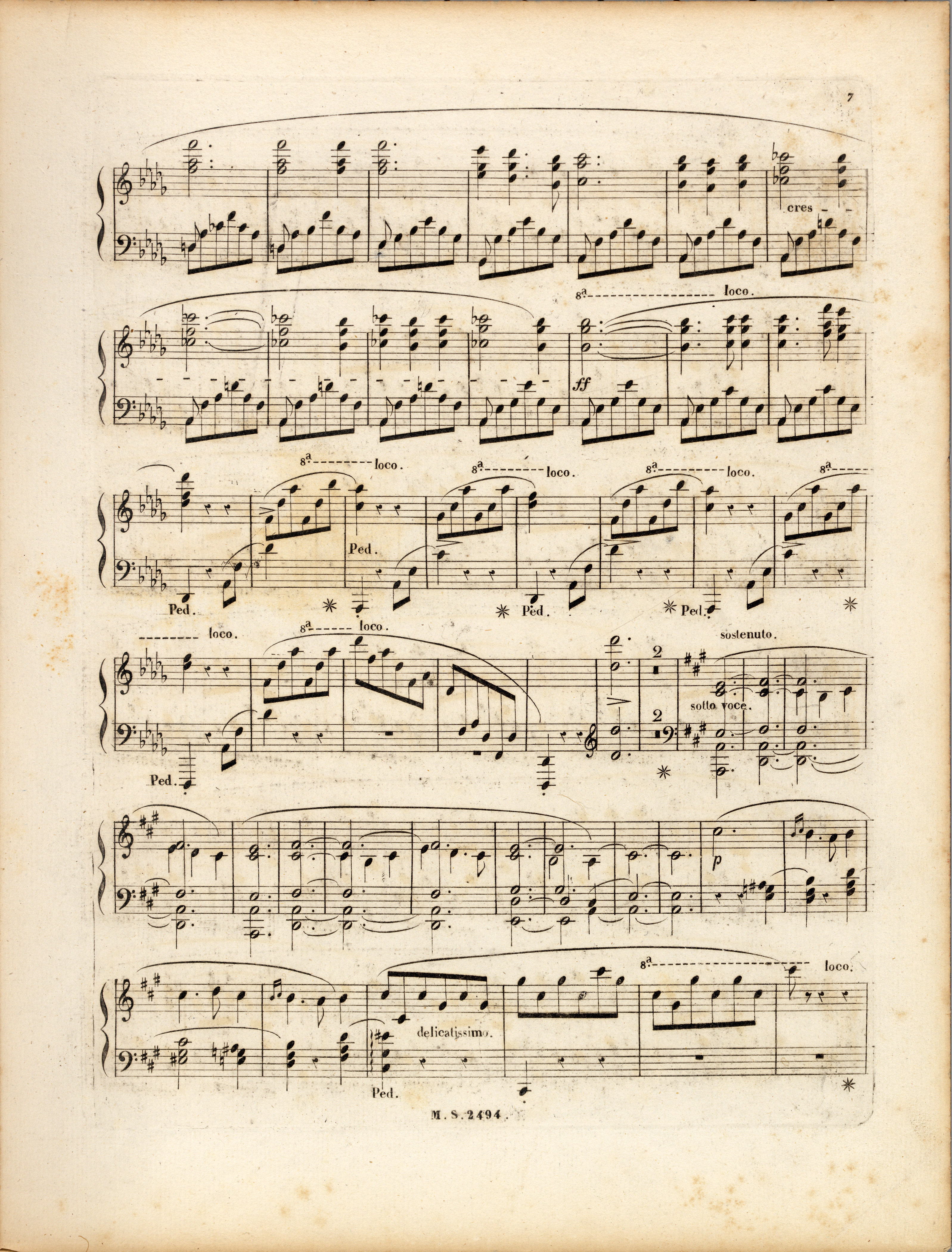



The curved lines of FE (→EE) in b. 265-266, both the tie of c 1 and the two slurs – see the adjacent note – are most probably erroneous:
1 and the two slurs – see the adjacent note – are most probably erroneous:
- whenever Chopin wanted to sustain the c
 1 note in this motif – in b. 285, 289, 387 & 391 – he would emphasise each one with a long accent, ensuring its good audibility 2 bars later, when it becomes the starting point for the motif of the middle voice. Had he wanted to introduce this version already here, for the first time, he would not have hesitated to add an accent.
1 note in this motif – in b. 285, 289, 387 & 391 – he would emphasise each one with a long accent, ensuring its good audibility 2 bars later, when it becomes the starting point for the motif of the middle voice. Had he wanted to introduce this version already here, for the first time, he would not have hesitated to add an accent. - an additional – in addition to the top phrase mark – emphasis of the combination of e-e1 with f
 -f
-f 1 does not seem to be necessary and was not repeated in any of the analogous places.
1 does not seem to be necessary and was not repeated in any of the analogous places.
According to us, all three curved lines between these bars were printed erroneously instead of three ties in b. 266-267 – such a 'mirror' mistake would be frequently committed in various pieces by Chopin, e.g. in the Etude in C Minor, Op. 25 No. 7, b. 23 or in the Concerto in E Minor, Op. 11, II mov., b. 41. Two of the overlooked ties were then added (except for the tie of f
Minor, Op. 25 No. 7, b. 23 or in the Concerto in E Minor, Op. 11, II mov., b. 41. Two of the overlooked ties were then added (except for the tie of f ), yet the erroneous curved lines were left untouched due to carelessness or calculation – they were considered not harmful enough to be removed. Such 'partial' corrections are also well documented, e.g. in the Ballade in F Major, Op. 38, b. 179, or in the Concerto in F Minor, Op. 21, III mov., b. 282. The omitted tie of f
), yet the erroneous curved lines were left untouched due to carelessness or calculation – they were considered not harmful enough to be removed. Such 'partial' corrections are also well documented, e.g. in the Ballade in F Major, Op. 38, b. 179, or in the Concerto in F Minor, Op. 21, III mov., b. 282. The omitted tie of f is another mistake of FE (→EE), which is proven by the presence of a corresponding tie in A (→FC→GE), not to mention seven analogous places where the note is tied. A corresponding tie was added in pencil in FESf.
is another mistake of FE (→EE), which is proven by the presence of a corresponding tie in A (→FC→GE), not to mention seven analogous places where the note is tied. A corresponding tie was added in pencil in FESf.
Compare the passage in the sources »
category imprint: Differences between sources
issues: Errors in FE, Sign reversal, Partial corrections
notation: Rhythm

